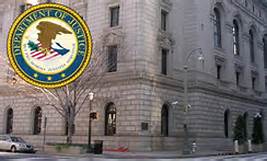A Mid-Year Assessment of FCPA Enforcement (Part II of II)
 DOJ’s criminal enforcement of the FCPA was the story of the second quarter of 2013. DOJ’s splash was so big on criminal enforcement that it overshadowed DOJ and SEC’s continuing enforcement of the FCPA against corporations.
DOJ’s criminal enforcement of the FCPA was the story of the second quarter of 2013. DOJ’s splash was so big on criminal enforcement that it overshadowed DOJ and SEC’s continuing enforcement of the FCPA against corporations.
Whether you favor or oppose DOJ and SEC’s use of DPAs and NPAs, FCPA enforcement actions in the second quarter of 2013 resulted in fines, compliance requirements and even corporate monitors. Add to those settlements the reputational harm suffered by the companies.
The second quarter settlements demonstrated that DOJ is showing no signs of retreat with its enforcement program. In fact, DOJ is bringing more cases and more are in the pipeline. Over the last three years, approximately 100 companies have disclosed ongoing FCPA investigations, so we can expect no let up in overall FCPA enforcement.
The headlines from the second quarter corporate settlements are that DOJ/SEC will:
- Continue to impose corporate monitors in appropriate cases;
- Give meaningful credit for remediation during an investigation; and
- Offer non-prosecution agreements as a possible resolution when a company voluntarily discloses FCPA violations.
Total: The Total settlement for $398 million confirmed the reputation of the “stubborn French.” It is no accident that several of the ongoing investigations and drawn out cases involve French companies. Total is an example of another recalcitrant company. Few, if any, French companies have earned cooperation credit. Total was no exception. While the bribery conduct occurred many years ago, Total’s bribery scheme was brazen, almost reaching $60 million. Total’s cooperation was minimal and they received no discount from the sentencing guideline range. The Total case marked the return of a corporate monitor as a settlement requirement. In addition, the Total case underscored the international cooperation between the United States and French prosecutors.
French.” It is no accident that several of the ongoing investigations and drawn out cases involve French companies. Total is an example of another recalcitrant company. Few, if any, French companies have earned cooperation credit. Total was no exception. While the bribery conduct occurred many years ago, Total’s bribery scheme was brazen, almost reaching $60 million. Total’s cooperation was minimal and they received no discount from the sentencing guideline range. The Total case marked the return of a corporate monitor as a settlement requirement. In addition, the Total case underscored the international cooperation between the United States and French prosecutors.
Parker Drilling: DOJ and SEC gave Parker Drilling a deferred prosecution agreement (DPA) and a fine of $11.6 million. Interestingly, Parker Drilling was able to extricate itself from the Panalpina settlements and earn a positive resolution to its FCPA case. With the guidance of Dan Chapman, a Baker Hughes alum (and Jay Martin protégé), who was hired by Parker Drilling five years ago, Parker Drilling implemented extraordinary remediation to its compliance program. As a result, Parker Drilling earned a bigger discount and better result than some of the Panalpina companies. The message from Parker Drilling is clear – when in trouble, remediate as much as possible, as early as possible.
Ralph Lauren: While some have suggested that Ralph Lauren’s settlement was unfair, I am reluctant to enter this debate since we do not know all of the facts and circumstances. Ralph Lauren earned an NPA from both DOJ and SEC and paid a total penalty of $1.6 million. Ralph Lauren’s Argentine subsidiary paid close to $600 thousand in bribes to Argentine customs officials to avoid import requirements. Ralph Lauren voluntarily disclosed the bribery scheme, enhanced its compliance program, and conducted a global risk assessment (not an investigation as mistakenly suggested by the FCPA Paparazzi).
 Phillips: Early in the second quarter, the SEC settled with Phillips for bribes paid to Poland hospital officials. Phillips paid a penalty of $4.5 million. DOJ declined to prosecute the case. Over an eight year period, Phillips paid 30 bribes. Phillips is the 18th pharmaceutical or medical device company to settle an FCPA case. According to estimates, there are at least 17 pending FCPA investigations involving pharmaceutical and medical device companies.
Phillips: Early in the second quarter, the SEC settled with Phillips for bribes paid to Poland hospital officials. Phillips paid a penalty of $4.5 million. DOJ declined to prosecute the case. Over an eight year period, Phillips paid 30 bribes. Phillips is the 18th pharmaceutical or medical device company to settle an FCPA case. According to estimates, there are at least 17 pending FCPA investigations involving pharmaceutical and medical device companies.















